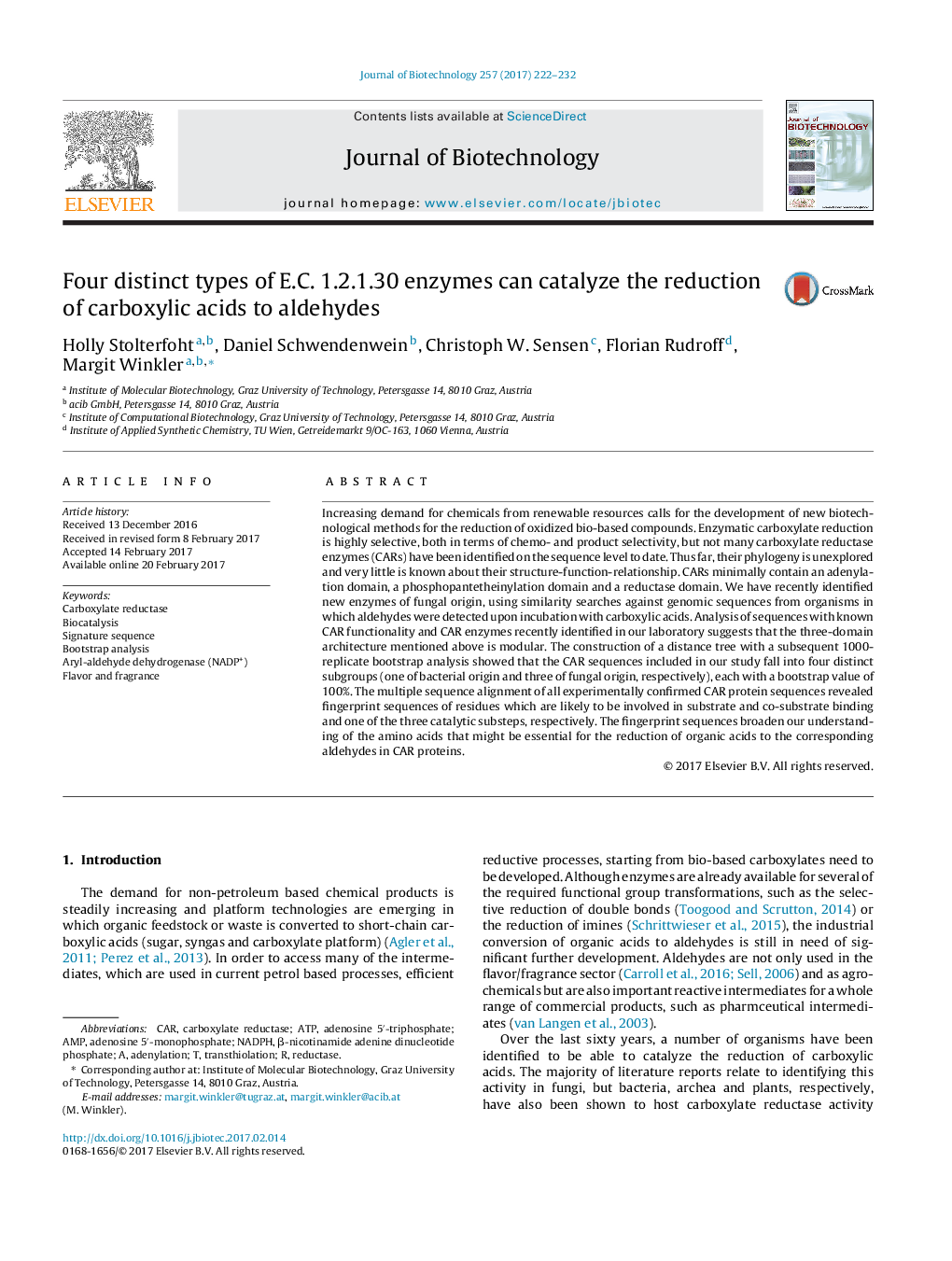| کد مقاله | کد نشریه | سال انتشار | مقاله انگلیسی | نسخه تمام متن |
|---|---|---|---|---|
| 6451931 | 1416986 | 2017 | 11 صفحه PDF | دانلود رایگان |

- Carboxylate reductase domain architecture is modular.
- CAR sequences of the EC1.2.1.30 family fall into four distinct subgroups.
- three fungal and one bacterial CAR type can be distinguished.
- A fingerprint sequences of residues which are likely to be involved in the catalytic substeps of carboxylate reduction was determined.
Increasing demand for chemicals from renewable resources calls for the development of new biotechnological methods for the reduction of oxidized bio-based compounds. Enzymatic carboxylate reduction is highly selective, both in terms of chemo- and product selectivity, but not many carboxylate reductase enzymes (CARs) have been identified on the sequence level to date. Thus far, their phylogeny is unexplored and very little is known about their structure-function-relationship. CARs minimally contain an adenylation domain, a phosphopantetheinylation domain and a reductase domain. We have recently identified new enzymes of fungal origin, using similarity searches against genomic sequences from organisms in which aldehydes were detected upon incubation with carboxylic acids. Analysis of sequences with known CAR functionality and CAR enzymes recently identified in our laboratory suggests that the three-domain architecture mentioned above is modular. The construction of a distance tree with a subsequent 1000-replicate bootstrap analysis showed that the CAR sequences included in our study fall into four distinct subgroups (one of bacterial origin and three of fungal origin, respectively), each with a bootstrap value of 100%. The multiple sequence alignment of all experimentally confirmed CAR protein sequences revealed fingerprint sequences of residues which are likely to be involved in substrate and co-substrate binding and one of the three catalytic substeps, respectively. The fingerprint sequences broaden our understanding of the amino acids that might be essential for the reduction of organic acids to the corresponding aldehydes in CAR proteins.
Journal: Journal of Biotechnology - Volume 257, 10 September 2017, Pages 222-232